Drowsy Driving Prevention Tips
December 18th, 2017 by Nikki Guerra
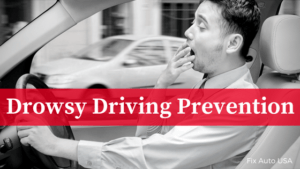
The holidays are a time to become more aware of the dangers of drinking and driving. But, there’s another type of impaired driving that can also lead to serious, and sometimes fatal, car accidents – drowsy driving.
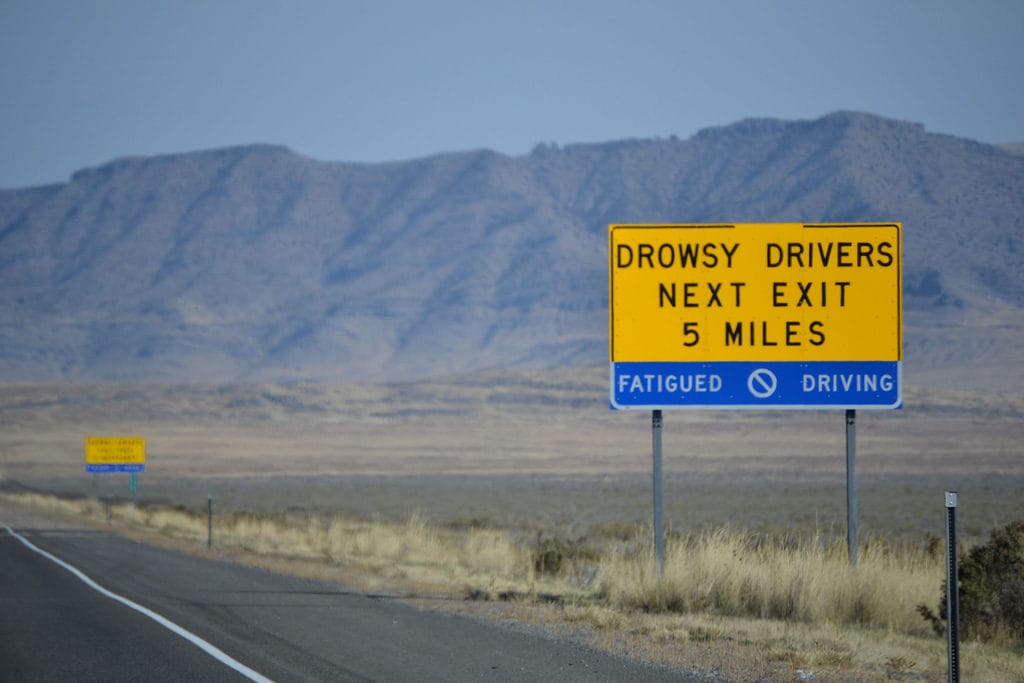
Drowsy driving causes up to 100,000 car accidents a year.
As with alcohol and drugs, drowsiness and driving do not mix. Drowsiness slows reaction times behind the wheel, decreases awareness and impairs judgment. It can interrupt how you process information and increase moodiness and aggressive behaviors – all of which significantly increases the risk of having an accident.
The National Highway Traffic Safety Administration (NHTSA) estimates that drowsy driving causes up to 100,000 car accidents and more than $12 billion in losses each year. $12 billion! Furthermore, a recent study by the AAA Foundation for Traffic Safety reported that 16.5% of fatal crashes involved a tired driver.
When and Why Does Drowsy Driving Happen?
Accidents caused by drowsy driving usually happen late at night, but they also frequently occur in the afternoon. They typically involve a single vehicle, with only the driver in the car, that veers off a highway. Because they are drowsy, if not asleep, the drivers in these situations rarely attempt to avoid the crash.
Factors that lead to drowsy driving include sleep loss, extended driving hours every day, driving during the middle of the afternoon, and driving for long hours without taking a break. Medications such as antidepressants and antianxiety can cause drowsy driving, as can untreated sleep disorders, including narcolepsy and sleep apnea syndrome. Of course, consuming alcohol, even just one or two drinks, can increase drowsiness in the driver, aside from being impaired.
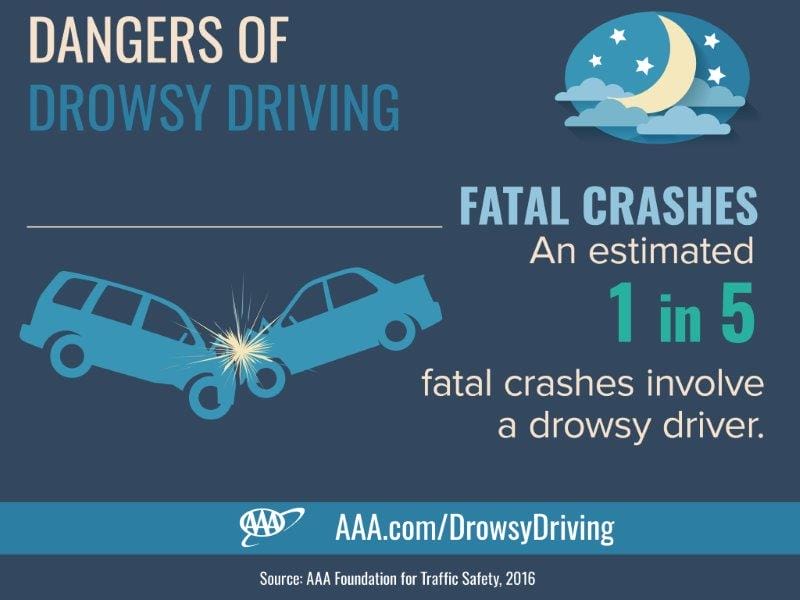
1 in 5 fatal crashes involve a drowsy driver
Anyone can fall victim to drowsy driving. However, three unique groups exhibit the highest risk for this dangerous behind-the-wheel behavior:
- People (especially males) age 16 to 29
- Employees who work at night or have long or irregular working hours
- People suffering from untreated sleep apnea syndrome and narcolepsy
Signs of Drowsy Driving
The main problem with drowsy driving is that people usually aren’t aware of it. If you’re on a long trip or driving late at night, look for the following symptoms:
- Heavy eyelids or difficulty focusing your vision
- Wandering or disconnected thoughts
- Trouble remembering the last few miles
- Driving past your exit or missing traffic signs
- Frequent, deep yawning
- Feeling restless or irritable
- Difficulty keeping your head up
- Tailgating
- Having trouble staying in your lane
If you notice one or more these symptoms, it’s time to let someone else drive or pull over and take a rest break.
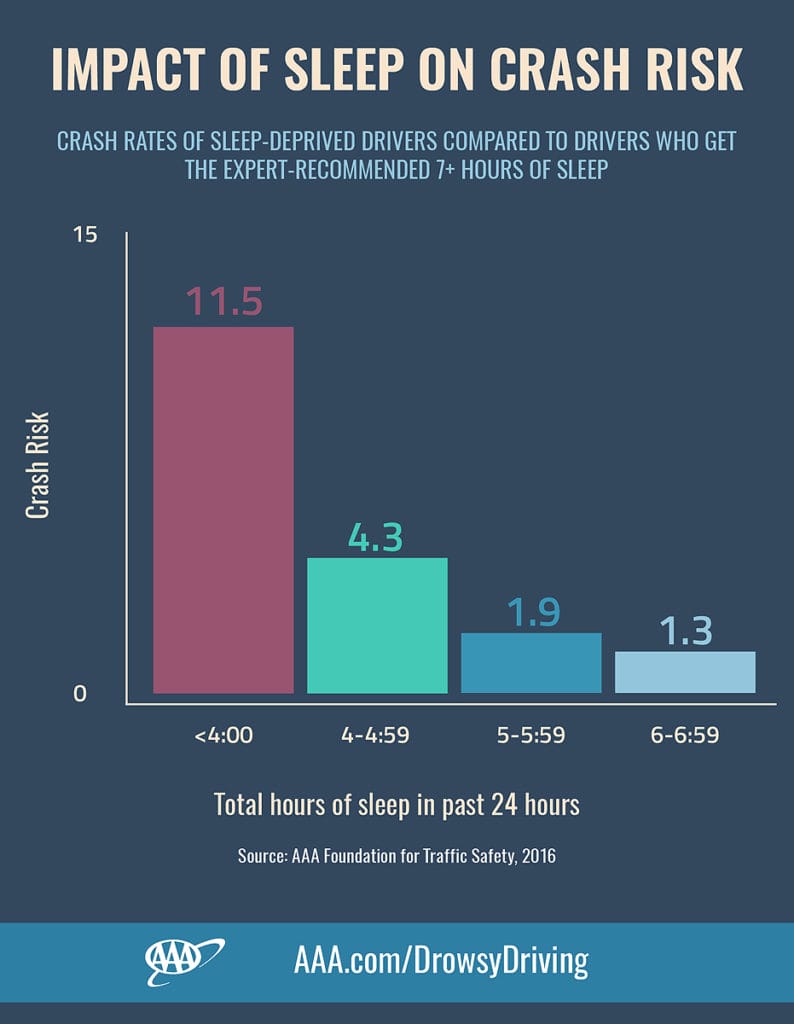
Experts recommend 7+ hours of sleep to prevent driving drowsy.
Preventing Drowsy Driving
Once you’ve had too much to drink, the only safety prevention is to hand over the keys and let someone else drive, or call your favorite ride sharing service. Fortunately, there are many steps you can take to avoid drowsy driving.
Before you start driving and once you’re on the road:
-
Get plenty of sleep.
Most adults need seven to nine hours of sleep each night to function normally. Getting less significantly increases the risk of drowsy driving. In fact, being awake for 18 consecutive hours is equivalent to a blood alcohol level of 0.08%, which is considered legally drunk in most states.
-
Don’t drive alone.
This is especially true on long trips and while driving at night. Another person in the car can point out when you start showing signs of drowsiness or driver fatigue, and can take over the wheel while you enjoy a nap in the passenger seat.
-
Lay off the booze.
If you think it can’t hurt to have just one drink, then think again. Even small amounts of alcohol can increase drowsiness and inattention, especially if you’re already tired or drink on an empty stomach.
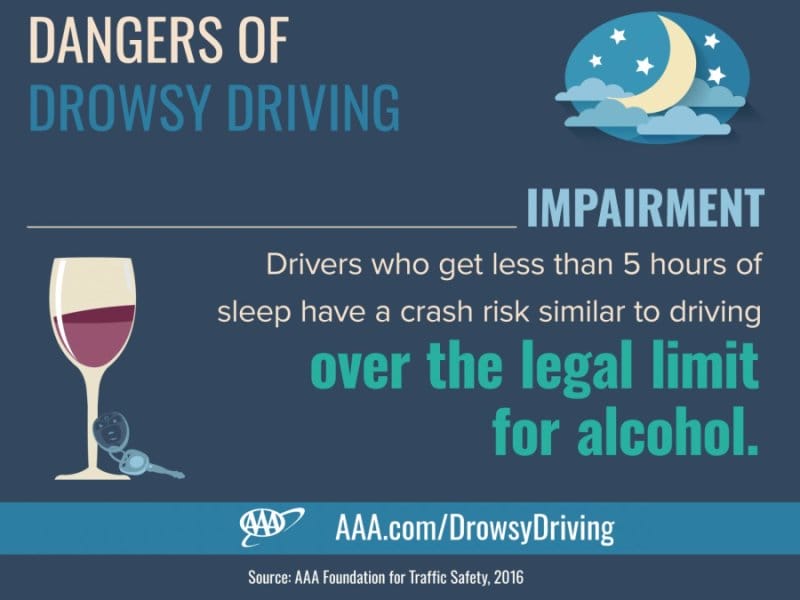
According to AAA, drivers with less than 5 hours of sleep have a similar crash risk to driving under the influence.
Once you get behind the wheel and set off toward your destination:
-
Take regular rest stops.
Every 100 miles or two hours – whichever comes first – stop for a break. If possible, step out of the car, walk around and stretch your legs.
-
Take a short nap.
If signs of drowsiness persist, pull over at a rest spot and take a nap. Or, switch places if you have another licensed drive in the car with you. A quick snooze for 15 to 30 minutes should do the trick.
-
Jumpstart your system with a cup of coffee.
A shot of caffeinated coffee can shake off the effects of drowsiness. Keep in mind that it takes two cups of coffee to fully recharge, and half an hour for the caffeine to get into your bloodstream and go to work.
Contrary to popular belief, opening the driver-side window and listening to the radio have not been shown to improve alertness when you are drowsy.
Don’t ‘Drowse and Drive’
The preponderance of evidence shows that drowsy driving should be avoided at all costs. Plus, many states are currently considering legislation that would hold drivers criminally negligent for injuring or killing someone while driving without adequate sleep.
So, do yourself and everyone else on the road a favor. If you notice any drowsy symptoms while driving, don’t try to “tough it out” or talk yourself through it. Pull over and rest, or let someone else drive!
Welcome to
Fix Auto USA
We are the premier independent body shop network delivering world-class customer service and high-quality collision repairs across the U.S.
Learn About Us




